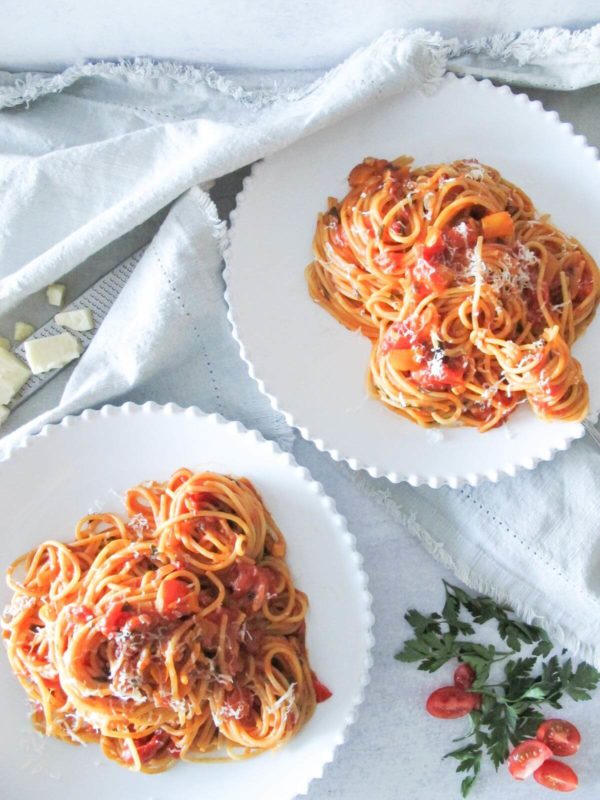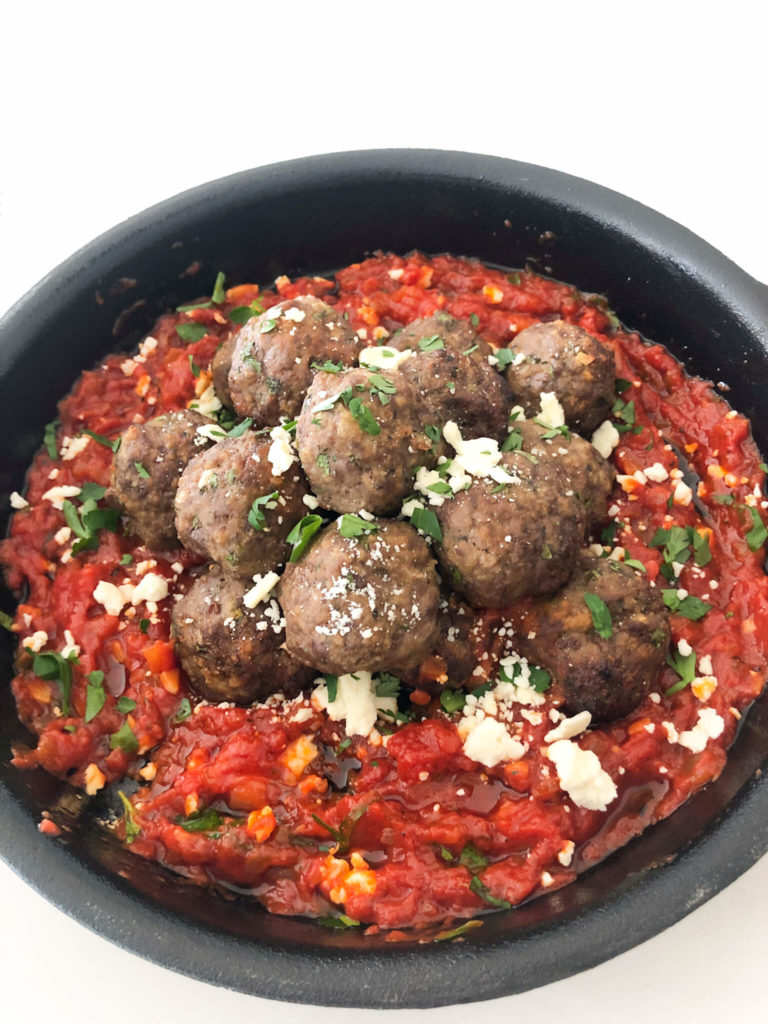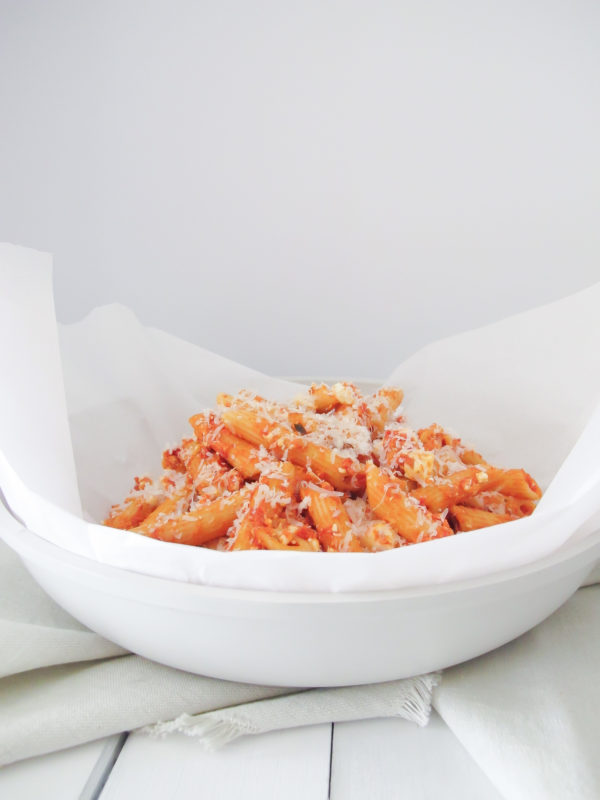Tomato sauce is versatile, delicious, and healthy! You can use tomato sauce for pasta sauces, meatball appetizers, or homemade tomato soup. And many other delicious meals!
Because tomatoes are acidic, sometimes your tomato sauce may turn out a little more acidic than you’d like and may overpower the dish. But, no need to stress. I’ve got a few valuable tips and solutions to help you achieve a perfect balance the next time you make homemade tomato sauce!
As a first step, if you’re going to use fresh tomatoes for your sauce, it’s best to use ripe tomatoes. Choosing the right tomatoes from the beginning or when they’re in season will instantly elevate the flavour and reduce the acidity of tomato sauce. Opt for varieties that are naturally sweeter and lower in acidity, like Roma tomatoes or San Marzano tomatoes.
WHY IS TOMATO SAUCE ACIDIC?
Tomato sauce is usually made with either fresh tomatoes, canned peeled plum tomatoes, tomato paste, or diced tomatoes simmered with water, white wine (which is also acidic), diced vegetables, dried or fresh herbs, and garlic.
There are many ingredients that you can use when making tomato sauce, but the main ingredient will always be tomatoes. Since tomatoes are acidic, sometimes they can make your tomato sauce taste slightly sour or bitter.
Keep in mind that fresh tomatoes tend to have lower acidity than tomato paste or purees. But, whichever type of tomatoes you use, below are a few easy steps to help you get the best flavour with your tomato sauce!
HOW TO REDUCE ACIDITY IN TOMATO SAUCE?
One of the most common and best ways to reduce the acidity of your tomato sauce isn’t a special ingredient. The answer is…time! Allow your tomato sauce to simmer gently on the stove for at least an hour. The longer the sauce can cook, the less acidic and more flavourful it will taste.
Slowly cooking the tomato sauce helps break down the tomatoes and reduces their acidity. Just make sure there’s enough water in the sauce (you can add more if needed) and that the heat is on low so that it doesn’t burn as it cooks. I also recommend stirring the sauce every 20 minutes so it doesn’t stick to the bottom.

1. GET CREATIVE WITH VEGETABLES
Add in fresh diced vegetables like white onions, carrots or celery. White onions and garlic can be simmered first with a little bit of olive oil. The onions will continue to cook in the tomato sauce and become sweeter as the sauce simmers on the stove. The best part is that, in addition to reducing acidity, vegetables make your sauce that much more nutritious and delicious! Other veggie add-ins can include kale (one of my faves because it doesn’t wilt as quick as spinach!), mushrooms, bell peppers, and zucchini.
2. SUGAR & SALT
Adding sugar to tomato sauce is one of the easiest steps to help reduce the acidity of tomato sauce. Plus, most people have sugar in their pantry. You can use white or brown sugar. Don’t forget to add some salt, too. It’s a good idea to taste the sauce after adding sugar and salt and make any adjustments if needed.
Overall, the addition of sugar will help you achieve a more balanced sauce with a slightly sweet flavour. I always add sugar and salt when making tomato sauce, but a little goes a long way, so taste as you go!

3. FRESH OR DRIED HERBS
Another great option is to add fresh or dried herbs like basil, oregano, Italian parsley, and bay leaves to your tomato sauce. Herbs add a lovely flavour and help to reduce the tomato’s acidity. If you’re using dried herbs, add them to the sauce near the beginning so the flavour has time to come out. On the opposite, if using fresh herbs, add them in the final few minutes so that the flavour doesn’t disappear.
ONE EXTRA TIP!
Creamy dairy products can help reduce the acidity in tomato sauce. For instance, adding a tablespoon of butter, a little bit of heavy cream, or crumbled cheese are all great options. However, because tomatoes are acidic, you’ll want to add any dairy at the end of the cooking time and when the sauce is on a low simmer. If dairy is added to the tomatoes when the temperature is high, the dairy could cause your tomato sauce to curdle. Another tip is to have your dairy at room temperature before adding it to the sauce (this will also reduce the chance of curdling). Remember to remove the tomato sauce from the heat once you add in the dairy.

Because tomato sauce is made primarily with acidic ingredients, you’ll likely want to try one of these tips next time you make delicious spaghetti with tomato sauce! Be sure to try the sauce as you go, but the secret ingredient of tomato sauce often comes down to time… allow the sauce to simmer on low heat for at least an hour or two for the best results. Experimentation is key, so don’t be afraid to get creative in the kitchen!
Popular Recipes With Tomato Sauce:
Date Published: May 5, 2022
3 Simple Tips To Reduce Acidity In Tomato Sauce
VIEW THE COMMENTS